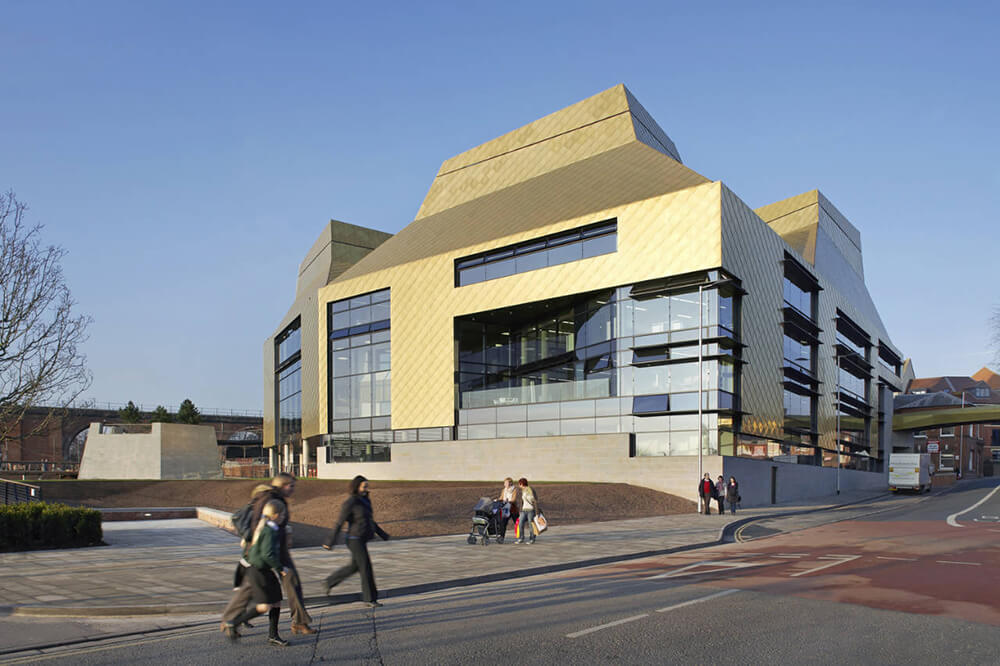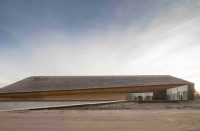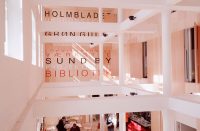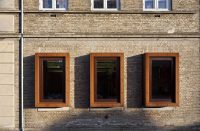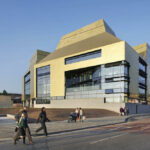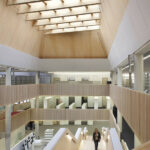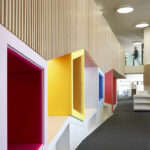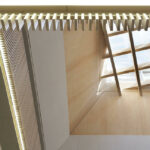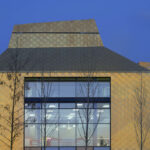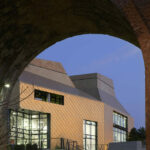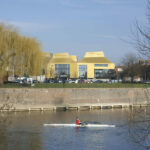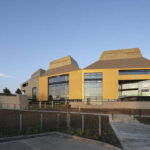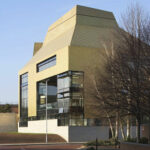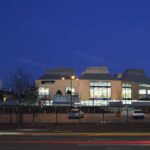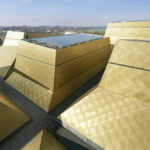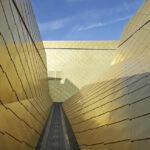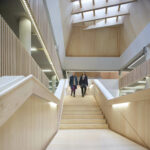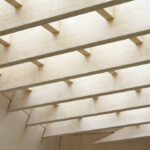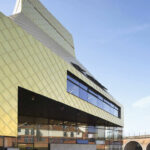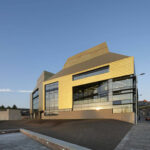Architect(s): Feilden Clegg Bradley Studios
Address: Sawmill Cl, The Butts, WORCESTER, United Kingdom
Latitude/Longitude: 52.193759,-2.225922
Photographs: Hufton+Crow
The Hive was conceived as a truly accessible building (that would not preclude any potential visitor or staff member using all the facilities) within a built form that would be innovative in operation with low carbon impact.
It is a testament to the strength of a collective vision pursued by the client, design and contractor teams working collaboratively to create a high performing low carbon building.
The Hive is the successful culmination of a groundbreaking partnership between Worcester County Council and the University of Worcester to create a fully integrated public and university library. This is an idea completely new to the UK and highly innovative internationally. The Hive is also home to the county archives and record office, a local history centre, and the county’s archaeology service.
Since its opening, there has been a 500 per cent increase in people signing up as members, compared to the old Library. Book borrowing has been up by 10 per cent, and the project has been awarded a BREEAM Outstanding rating.
Context
The site is on the western fringe of Worcester city centre and lies within the regeneration area of St Clements’ Gate. This is an important zone, situated between the medieval centre and the riverside. In the second half of the twentieth century it became fragmented and lost any urban form.
To the south of the site there is a Scheduled Ancient Monument, which is retained and exploited as part of the site-wide historic interpretation.
Sustainability
The Hive was designed to meet a challenging sustainability brief, including a 50% reduction in Part L CO2 emissions. The building is cooled using water from the nearby River Severn, and a biomass boiler uses locally sourced woodchip to generate heat. By incorporating sustainable measures such as these, The Hive achieved an ‘A’ rating from the EPC and BREEAM Outstanding.
Since it opened it has been continuously monitored to reveal that it operates at an electrical energy consumption of 50kWh·m-2 year-1, about half of its design target (and one third to one quarter that of many contemporary office buildings).
Concept
The Hive was conceived as a ‘social landscape’ providing horizontal and vertical connections, allowing every user to move around the building freely. Access through the site is provided by a series of ramps that form an external street. This approach has allowed us to create step-free access.
The building’s form and its unique structure draw inspiration from the kilns of the historic Royal Worcester works and the undulating ridge of the Malvern Hills.
Materials
The roof is formed by a series of irregular laminated timber roof cones, which optimise natural lighting and ventilation throughout the structure. Through innovative parametric modeling developed in-house we were able to remove 250 tons of steel in the roof by replacing it with cross laminated timber. This saved 2,000 tons of CO2 compared with a concrete or steel alternative.
The roof is clad in copper alloy diamond shingles, creating a long-lasting shimmering facade that creates a beacon for learning in Worcester city Centre.
Text description provided by the architects.
Client: University of Worcester and Worcestershire County Council
PFI client: Galliford Try Investments
Structural engineer: Hyder Consulting (UK) Ltd/ Atelier One
M&E engineer: Max Fordham LLP
Planning supervisor: Arcadis AYH
Landscape consultant: Grant Associates
Contractor: Galliford Try Construction
Cladding consultant: Montresor Partnership
Access consultant: All Clear Designs
Contributed by Feilden Clegg Bradley Studios

